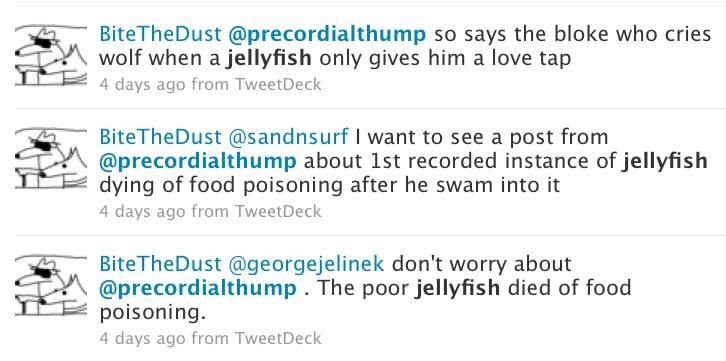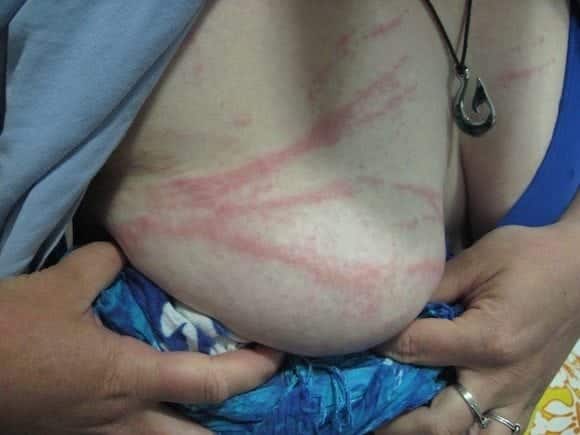Never Kiss a Jellyfish
Although I ‘love’ jellyfish from the point of view of a clinician, I try to avoid getting too ‘up close and personal’ with them. Unfortunately upon diving into the Indian Ocean last weekend – a maneuver described as ‘ungainly’ by one witness – I plunged face first into a jellyfish:

Thankfully, there was sympathy from some quarters (@goldenskye):
And when it comes to first aid, there are advantages to being a doctor – doctors know that clinical guidelines are just a guide, they can be deviated from (when clinically indicated):
Furthermore, despite a large number of volunteers willing to supply the supposedly therapeutic substance, I knew that urine is not effective first aid for jellyfish stings. I also knew that one of the best ways to start feeling better is to find someone else who is worse off than yourself (@georgejelinek):
Unfortunately, I discovered that not everyone is blessed with the empathy gene – such people are probably best shipped out to the Gibson Desert.
If it wasn’t for Twitter, we’d never have to hear from them…
And before anyone asks, the sting was not an intentional act designed to activate my sodium channels…
To paraphrase Mae West: “Are your sodium channels open, or are you just glad to see me?”
Leon Gussow (see comments on ‘Mad Honey Sex‘ at The Poison Review)
It should also be noted that in addition to kissing jellyfish being a ‘bad’ idea, the Life in the Fast Lane team no longer recommend the use of BlueBottle Jellyfish as nipple tassels. As highlighted in this post – the combination of nipple tassels, Blue Bottles and inappropriate facial hair can be potentially lethal…
Chris is an Intensivist and ECMO specialist at The Alfred ICU, where he is Deputy Director (Education). He is a Clinical Adjunct Associate Professor at Monash University, the Lead for the Clinician Educator Incubator programme, and a CICM First Part Examiner.
He is an internationally recognised Clinician Educator with a passion for helping clinicians learn and for improving the clinical performance of individuals and collectives. He was one of the founders of the FOAM movement (Free Open-Access Medical education) has been recognised for his contributions to education with awards from ANZICS, ANZAHPE, and ACEM.
His one great achievement is being the father of three amazing children.
On Bluesky, he is @precordialthump.bsky.social and on the site that Elon has screwed up, he is @precordialthump.
| INTENSIVE | RAGE | Resuscitology | SMACC





